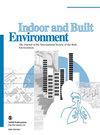高层建筑分阶段疏散时间的数值分析与验证
IF 2.9
3区 工程技术
Q2 CONSTRUCTION & BUILDING TECHNOLOGY
引用次数: 0
摘要
本研究的主要目的是对高层建筑分阶段疏散进行数值分析,验证控制体积模型在高层建筑分阶段疏散中的可行性。基于2018年日本学术小组进行的一次实际消防演习,在相同的空间配置、每层参与人数和四阶段疏散的情况下,对该高层建筑的分阶段疏散进行了数值分析。数值计算结果在到达地面的总人数、时空特征曲线和每层第一个到达地面的参与者等方面与消防演练数据吻合较好。本研究获得了每层等待参与者的数量随时间的变化,并将其与消防演习数据进行比较,以了解该高层建筑在分阶段疏散过程中内部参与者的瞬态情况。通过NFPA的一阶近似法、Melinek和Booth法以及日本建筑中心验证法的B路线计算结果,讨论了分阶段疏散与建筑总疏散的区别。本文章由计算机程序翻译,如有差异,请以英文原文为准。
Numerical analysis and validation on the phased evacuation time in high-rise buildings
The main aim of this study is to investigate the numerical analysis of phased evacuation and validate the feasibility of high-rise buildings using the control volume model. Based on the same spatial configuration, the number of participants on each floor, and four-phased evacuations of an actual fire drill conducted by a Japanese academic group in 2018, the numerical analysis results for these phased evacuations of this high-rise building have been investigated. The numerical results are in good agreement with the fire drill data in the aspects of the total number of people reaching the ground floor, the space-time feature curve and the first participant on each floor descending to the ground floor. The changes in the number of waiting participants versus time on each floor were obtained and compared in this study with the fire drill data to comprehend the transient situations of the internal participants in this high-rise building during the phased evacuation. Furthermore, the results of the first-order approximation method of NFPA, the Melinek and Booth method and the Route B calculation of the Japanese Building Center Verification Method for the total building evacuation are presented to discuss the differences between the phased evacuation and the total building evacuation.
求助全文
通过发布文献求助,成功后即可免费获取论文全文。
去求助
来源期刊

Indoor and Built Environment
环境科学-工程:环境
CiteScore
6.40
自引率
25.00%
发文量
130
审稿时长
2.6 months
期刊介绍:
Indoor and Built Environment publishes reports on any topic pertaining to the quality of the indoor and built environment, and how these might effect the health, performance, efficiency and comfort of persons living or working there. Topics range from urban infrastructure, design of buildings, and materials used to laboratory studies including building airflow simulations and health effects. This journal is a member of the Committee on Publication Ethics (COPE).
 求助内容:
求助内容: 应助结果提醒方式:
应助结果提醒方式:


